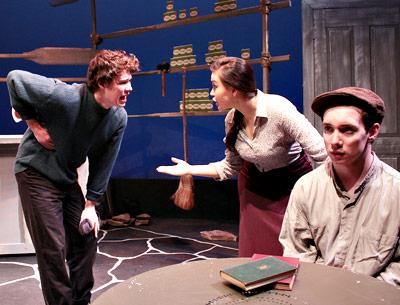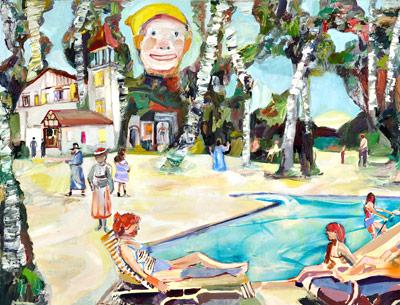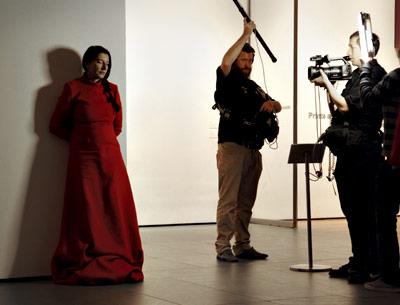The Art Scene: 01.23.14
The Art Scene: 01.23.14
Gesture Jam at Parrish
The Parrish Art Museum is hosting Gesture Jam, a hybrid figure-drawing class and social event, tomorrow at 6 p.m. Multiple models will pose with props and costumes, while the cafe will offer drinks for purchase and D.J. Mister Lama will spin tunes from his wide-ranging collection. The evening was conceived by Andrea Cote, a multimedia artist whose performances and installations have been presented at the Neuberger Museum, the Delaware Art Museum, and the Dumbo Arts Festival, as well as at various venues on the East End.
Tickets are $10, free for members, children, and students, and include museum admission. Participants should bring their own sketchpads and dry-media drawing materials.
Art Advice for Collectors
Ralph Lerner, a principal of Art World Advisors, will discuss “What Can You Do With Your Art?” on Sunday at 11 a.m. as part of Guild Hall’s ongoing Table Talk series. Mr. Lerner will explore proper ways to donate art, both during one’s life and at death; valuation issues, and how the Internal Revenue Service Art Panel operates. He will also discuss the sale of art at auction and provide a few caveats.
Mr. Lerner is the co-author with Judith Bresler of “Art Law,” which, according to Barbara Jo Howard, Guild Hall’s director of marketing and communications, is “considered the gold standard in legal and tax guidance for visual art professionals, collectors, and their attorneys.”
Mr. Lerner has had some legal troubles of his own recently, having been barred in October from practicing law for one year by the Appellate Division of the New York State Supreme Court for improperly charging clients of his previous firm. He is also a defendant in a lawsuit brought by the Cy Twombly Foundation, of which he is a director.
A $10 donation has been suggested for the talk.
Underwater at Ashawagh
“Oceans Matter,” an exhibition of underwater photographs by Stephanie Whiston, will open Monday at Ashawagh Hall in Springs and run through Feb. 7.
Ms. Whiston, who lives in Montauk and has been painting landscapes and seascapes since childhood, took up underwater photography 20 years ago and has since captured images from the Red Sea to the Indian Ocean to the North Pacific to the South Atlantic — virtually anywhere there is water. Her photographs and the Marine Education Foundation, which she founded, are devoted to presenting rarely seen underwater life before the fragile habitats disappear.
A reception will take place on Feb. 1 from 6 to 8 p.m.
Farther Afield
“Beauty and the Beast: The Erotic Art of Ian Hornak” will open tomorrow at the Kinsey Institute for Research in Sex, Gender, and Reproduction at Indiana University, where it will be on view through April 4.
The artist, who lived and worked in East Hampton from 1970 until his death in 2002, was a photorealist best known for his landscapes and still lifes. The erotic paintings and drawings in the Kinsey exhibition were executed in 1968 and exhibited at that time at the Stable Gallery in New York.
New Art Professors
Suffolk Community College will introduce two new art professors with an exhibition of their work from Monday through Feb. 15, at the Lyceum Gallery on the Riverhead campus.
Meredith Starr, who will teach drawing and two-dimensional design, creates drawings and prints layered with video and sound. Richard Mack, professor of graphic design, makes large-scale collages that celebrate the beauty of typography.
Paintings by Thacher
“Detours,” the first solo exhibition of paintings by Anita Thacher, an artist with a house on Shelter Island, is on view through Feb. 24 at Microscope Gallery in Brooklyn. Widely known for her work with film, video, light installation, and public art, including a projection piece at the Greenport train station, she has emphasized painting in recent years.



